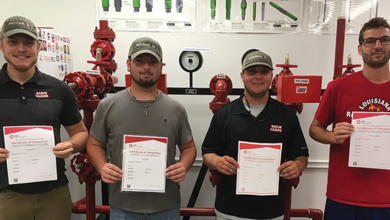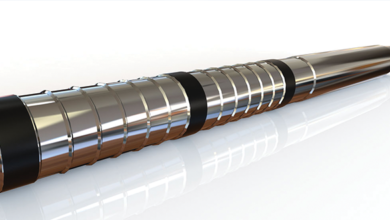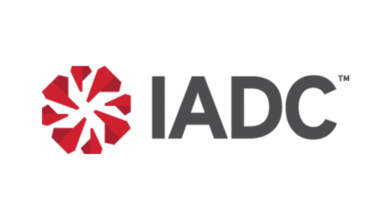Drilling & Completion Tech Digest
BP’s supercomputer becomes most powerful with increased total computing power
BP announced in December that it has more than doubled the total computing power of its Center for High-Performance Computing (CHPC) in Houston, making it the most powerful supercomputer in the world for commercial research. Increased computing power, speed and storage reduce the time needed to analyze large amounts of seismic data to support exploration, appraisal and development plans, as well as other research and technology developments throughout BP.
The CHPC provides critical support to BP’s upstream business segment, where it serves as the worldwide hub for research computing. BP’s computer scientists and mathematicians at the CHPC have enabled industry breakthroughs in advanced seismic imaging and rock physics research to help with reservoir modeling. BP’s downstream business also is using the supercomputer for fluid dynamic research to study hydrocarbon flows at refineries and pipelines to improve operational safety.
Using Hewlett Packard Enterprise’s Apollo System and Intel’s Knights Landing processors, the recent upgrade boosted the processing speed of BP’s supercomputer from four petaflops to nine petaflops. A petaflop is 1,000 trillion floating point operations, or “flops,” per second. The supercomputer has a total memory of 1,140 terabytes (1.14 petabytes) and 30 petabytes of storage.
Since the CHPC opened in 2013, BP has quadrupled its computing power and doubled its storage capacity.
Statoil joins Aker BP, Lundin Petroleum, NOV in subsea JIP

Statoil has joined Aker BP, Lundin Petroleum and National Oilwell Varco (NOV) in the DEMO2000 joint industry project. The project aims to bring the Fuglesangs Subsea Omnirise single-phase booster to market by early 2019. “Once we eliminated the single biggest problem with subsea pumps, all the other pieces fell into place,” Alexander Fuglesang, CEO of Fuglesangs Subsea, said. That problem was the mechanical shaft seal, the source of 70% of subsea pump failures.
Not only is failure a challenge with dynamic shaft seals, but they also require a constant flow of so-called barrier fluid, supplied by topside hydraulic equipment and delivered through umbilical lines that can stretch over many kilometers. Traditional variable speed drives also add weight and volume topside.
The Omnirise system eliminates these elements by employing a patented Hydromag Drive Unit, essentially a combination of a fixed low-speed subsea electric motor, a variable-speed torque converter and high-performance magnetic coupling.
In CAPEX alone, Rystad Energy has estimated that Omnirise can provide savings of NOK 150 million on a single-well boosting installation, compared with conventional boosting systems.
Sensor system improves well integrity monitoring in Norway
Wintershall has deployed Emerson’s latest Roxar Downhole Sensor System on the Maria field offshore Norway, providing improved well integrity monitoring and offshore safety. The latest deployment of the system – a wireless solution that delivers integrity data and measures online and real-time pressure and temperature information from behind the casing in subsea production wells – follows the successful deployment of several dozen systems in other fields over the past four years.
The pressure and temperature monitoring system allows Wintershall to verify that the predicted pressure buildup falls within the design criteria, and an alarm trigger point is implemented in case pressures that are potentially outside the system design are reached.
Improvements in the system now allow it to access online displays and trending of previously unreachable temperature and pressure subsurface data behind the well casing and achieve online integrity verification without any impact on production. The system has been tested at 437°F (225°C) and can withstand pressures of up to 20,000 psi.
The system ensures that wells meet integrity monitoring standards, such as API RP90 and NORSOK D-010.
Devon Energy Announces 5,100-BOED STACK Well
Devon Energy has brought online a high-rate Lower Meramec oil well offsetting its Coyote development in the overpressured oil window of the STACK play. The Faith Marie 1-H resides directly adjacent to the company’s Coyote development project in Blaine County and achieved a peak 24-hr rate of 5,100 bbl of oil equivalent per day (BOED).
The projected 30-day rate for this 9,000-ft lateral well is 4,600 BOED (65% oil). Oil productivity from the Faith Marie is the highest of any STACK well to date targeting the Lower Meramec interval. Well productivity at Faith Marie was enhanced by a new completion design that improved stimulated rock volume through the systematic cycling of pressure and fluid rates.
The design also lowered well costs at Faith Marie to $9 million. This improvement, compared with legacy wells in the area, was driven by the use of a higher viscosity slickwater fluid system, increases in frac stage length and other proprietary modifications. The learnings from this enhanced completion design will be deployed to future full-field development activity.
Drilling also is under way at Devon’s Showboat project in Kingfisher County, which is the company’s first multi-zone development in the STACK play.





